 "718Rogue" (562siast)
"718Rogue" (562siast)
10/03/2014 at 22:11 • Filed to: None
 1
1
 0
0
 "718Rogue" (562siast)
"718Rogue" (562siast)
10/03/2014 at 22:11 • Filed to: None |  1 1
|  0 0 |
He owns not one, but two nearly perfect examples of one of the Japanese car enthusiast's most coveted cars. He grew up immersed in automotive culture, living in the mecca of almost every kid who's ever watched the !!!error: Indecipherable SUB-paragraph formatting!!! series, Tokyo Drift, or any other of the plentiful popular media celebrating the import car culture: Japan. Now, a second-year student at California State University, Long Beach, Phillip Jyun Watanabe describes himself as "just a kid with a dream, who's trying to pursue it with the odds against [him]".
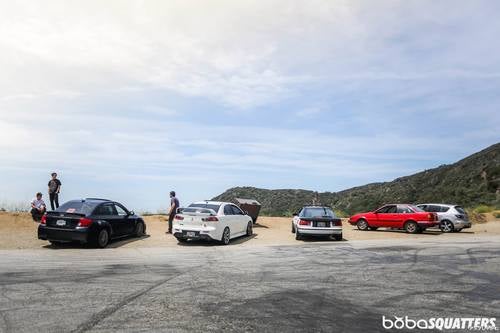
For many of us, kids with not a lot of money but a burning passion to stand out in the automotive world with our own personalized cars, cheap Japanese imports, with their relatively low price and plentiful, inexpensive parts, are what we grew up around. For many of us, our friends, maybe our families, drive Nissans, Mazdas, Toyotas, Hondas, and for a tiny fraction of the price of a new sports or luxury car, can tune and customize these imports into vehicles which can go much faster or turn more heads than a new car straight from the dealer. Japan, where many of these cars were designed and produced, is like a sacred land for many import car fans. There are several models or trim levels of cars which were only sold in Japan, often because they didn't meet U.S. safety or emissions standards, or because their manufacturers wanted to create exclusivity, or for other reasons. In a sort of automotive representation of the expression "the grass is greener on the other side", many U.S. car enthusiasts desire to make their cars look more like their Japanese counterparts, and many Japanese tuners emulate American trends and styles.
As for Watanabe, whose friends call him Jyun, he grew up in the small town of Sapporo, Hokkaido, Japan, nestled among several mountains, where he first learned to drive. Japan is the origin of street drifting and, arguably, mountain driving. Because the cities in Japan are so crowded and the roads are so narrow, and Japan is a mountainous country, many drivers in Japan escape the city limits and choose to stretch their cars' legs in the mountains and canyons, where there is less risk of traffic, collision, or police intervention. These twisty, technical mountain passes are literally translated as, and commonly referred to, as the "touge", the Japanese word for "pass". Jyun went back and forth in grade school between Sapporo and Long Beach, graduating from Long Beach Polytechnic High School, and moved permanently to Long Beach in 2009.
Jyun's story starts with his dad, who he credits with being an automotive mentor and huge influence to him. "My dad liked Japanese cars since the '70s, and worked for !!!error: Indecipherable SUB-paragraph formatting!!! /TERZO's rally team in the '80s and '90s, and was heavily involved in the car world", he explained. "Growing up, I met a lot of his friends who were also car people. One was the team manager for the 1989 IMSA class winning Nissan 240SX team, another is head of the DeTomaso Pantera Owners' Club of America, and others are involved in the automotive or motorsports world in different ways".
"In addition, my dad drove me everywhere since I was a baby, and since he was a very good driver, I got a feel for cars through all those years sitting passenger to him". Jyun's dad, and most of his friends, preferred 1980s Japanese cars for their cheapness, lightness, balance, and organic driving feel. The '80s were perhaps the last decade for simple, mechanical driver's cars, as electronic traction, stability, throttle control, and other systems which interfere with driver input in the name of safety began to appear in production cars in the '90s. Stricter federal laws also mandated more safety equipment and crash protection, and cars began getting more luxurious with power windows, seats, navigation systems, etc., resulting in cars becoming several hundred pounds heavier, severely changing their driving feel and characteristics.
Jyun further explains that, during the time he grew up in Japan, drifting was experiencing a huge surge in popularity, with the D1 Grand Prix series exploding onto the international screen, and the popularity of tuning cars was "going wild". On his block alone there were four purpose-built tuner cars: a drift-tuned Nissan R33 Skyline, a GC8 Subaru Impreza modified to look and drive like the extremely rare 22B rally homologation special, a Nissan BCNR33 Skyline GTR, and his own grandpa's JZX81 Toyota Mark II (as a testament to how different Japan's car culture is from ours, none of these cars, except for the non-22B Subaru Impreza, was ever sold in the U.S.).
Growing up around cars, Jyun always had the internal urge to go fast, whether on a bike or skateboard as a kid, to local go-kart tracks and competitions starting when he was 8. He would watch Formula 1, Super GT, and JGTC races on TV and dream of driving the cars, but in 2005 he encountered drifting firsthand for the first time.
"I had seen drifting before in magazines and on TV, and a few of my friends were into it, but I never really cared for it… Then I remember one night, I was camping at a lake in Japan with some friends and family. Late at night, I had to use the bathroom, so I walked over and heard tires screeching in the distance. I walked over to the main road and in seconds see a group of mainly (Nissan 240SX) S13s, S14s, and AE86 (Toyota Corollas) come down the corner drifting at wide open throttle. It was the first time I saw drifting up close. It was the most exciting thing I had ever seen. From that moment I fell in love with drifting… The smoke, the turbo whine, the high revving naturally aspirated 4AG sound, it was exhilarating. From then on, I started going to drift spots and local touges around Sapporo and watch drifters practicing all night".
Just before moving to Long Beach, Jyun's grandpa let him drive his Mark II, and at 13 years old, he learned to drive a road car (completely different from a go-kart, because of their power, weight, suspension, and the characteristics of weight transfer). Finally, after moving to the U.S., he got his learner's permit at 15 years old, and would take whatever family member he was living with at the time in their stock, automatic 1999 Corolla (one of the blandest economy cars available). Jyun would continue to take his family's cars to the local mountains - usually Highway 39 or Glendora Mountain Road - until he was 17, when he finally bought his own first car at the beginning of his senior year, a 1986 Toyota Corolla SR5. The SR5 was the less sports-oriented model of the AE86 Corolla and other contemporary Toyotas, with a 70 horsepower 4AC carbureted motor and a less performance-oriented suspension and drivetrain. It was stock and automatic, but he was so happy just to have his own car that he didn't care at the time.
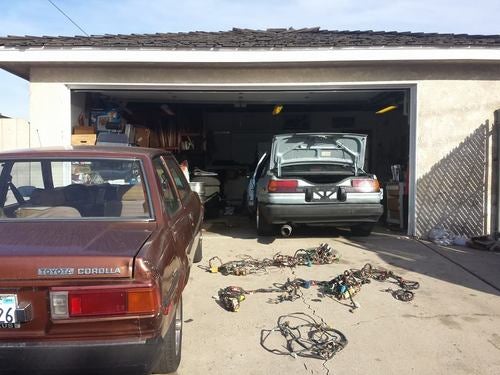
Jyun's first car (in the garage), which has since undergone extensive modifications.
"My love affair with the AE86 started when I was 9, when I first heard of the car in a !!!error: Indecipherable SUB-paragraph formatting!!! store in Japan. Since my dad was good friends with the head of the entire tires department of Autobacs Japan, we visited Autobacs a lot. I was bored while my dad was looking at car parts, and found a TV playing a movie, which I later found out was the Chinese Initial D live action movie. I started to watch it, and it was the scene when Bunta shows Takumi how to drive the AE86 after they had swapped in the new 20 valve engine. My dad came over and I asked what car that was, and he told me it was an AE86 Corolla. Before that day, I only knew about the early 2000s Corolla economy cars, and couldn't believe that something that cool was a Corolla. It wasn't until Formula D Long Beach a year later when I really fell in love with it. I was sitting on my dad's shoulders on the fence of the track and they were having an exhibition run, and I specifically remember John Rusakoff's light blue AE86 drifting in tandem with a bunch of (Nissan) S-chassis. I actually thought it was a MK2 Supra at the time, but later found out it was an AE86. Then one of my cousins found out that I liked drifting and the AE86, and donated his entire collection of !!!error: Indecipherable SUB-paragraph formatting!!! / !!!error: Indecipherable SUB-paragraph formatting!!! /CarBoy VHS tapes and DVDs to me since he was moving to Malaysia to race in !!!error: Indecipherable SUB-paragraph formatting!!! . For all those years until I moved permanently to Long Beach, that was all I watched. When I moved here, I quickly joined !!!error: Indecipherable SUB-paragraph formatting!!! and learned everything I could about anything AE86/4AG/Toyota related so that when the time came I was properly educated".
!!! UNKNOWN CONTENT TYPE !!!
For a year straight, Jyun collected parts to convert his AE86 SR5 into a GTS (the more performance-oriented trim level), but with no money and a girlfriend to spend most of his money on, he didn't get much done.
"Finally in the summer, I ripped out the 4AC because I couldn't take the 60 horsepower anymore and was getting left behind by all my friends. All I had was a few jack stands and a basic socket set and ratchet that my dad had given me, but now that I was in college and single, I had a lot more time to build my AE86. I started flipping cars for money, which all went into my AE86, and learned a wealth of knowledge stripping my car to a bare shell and putting it all back together, to the point where I can work on almost any car and know basically what to do. As of right now, my first car has been converted into a 20-valve 4AG with a manual transmission, sports suspension, new wheels, and too much more to list.
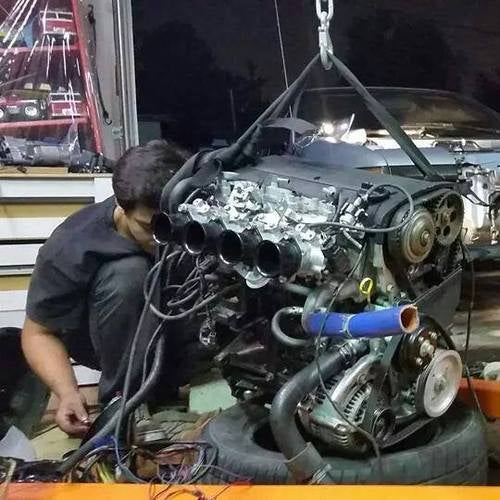
Jyun preparing to drop the 20-valve 4AG into his AE86
Sometime during this journey, Jyun also bought a stock AE86, which is an authentic GTS that he plans to keep stock and uses as his daily driver, as well as taking it to the canyons and desert, where he learned a lot about rear-wheel-drive car control, and still goes to the canyons to hone his skill.
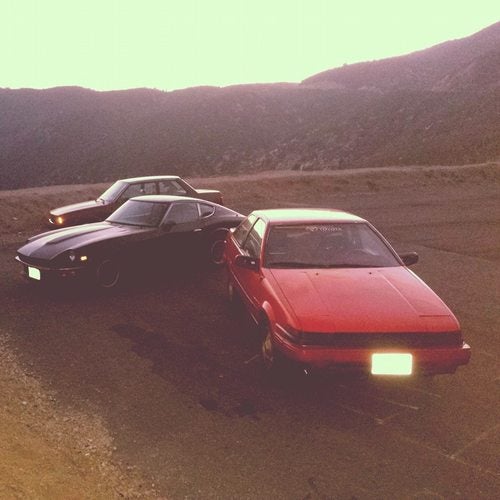
Jyun's AE86 GTS and some of his friends' cars at the top of Highway 39, north of Azusa.
Jyun's ultimate dream is to one day learn to really drift, once his 20-valve is roadworthy, and participate in professional drift competitions.
"But drifting is hard. The competition is stiff, and the sport is unbelievably expensive. Professional-level competition nowadays is impossible to break into without a ridiculously powerful car - 500, 600, 700 horsepower - and with that kind of power, engines need to be rebuilt pretty often, which costs thousands of dollars. Preparing and maintaining a competitive car would cost tens of thousands of dollars, and even with big name sponsorships, many drivers still go broke".
"Some people say it's dedication, but I just love driving hard and driving AE86 Corollas. Now because of this love of driving and cars, I have met many people who I've become good friends with, helping each other work on our cars, driving hard and pushing each other, exchanging information and educating people, and I've also met plenty of people who didn't have the advantages I had growing up and still don't know that much about cars and working on them, who I'm glad to help with my extra experience. It would be cool to get a future in motorsports, especially drifting, but like many things, I don't have the money or time to build a spec car and enter events yet, so until then I'll drive whatever and wherever I can. In a way, not having the money to get a shop to do all of my work is a blessing, because if I had had the funds to get my cars professionally worked on, I wouldn't know half as much as I do now. For now, I'm just having fun doing what I love".
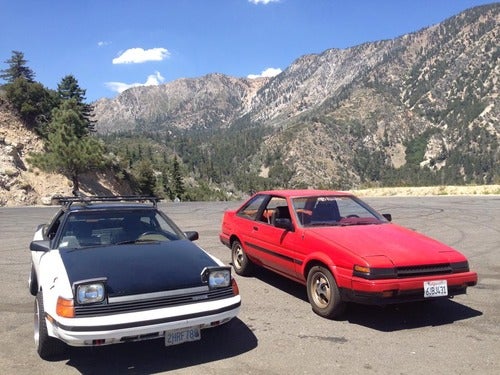
Friendships formed through passion. May they last forever.
!!! UNKNOWN CONTENT TYPE !!!